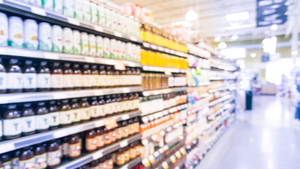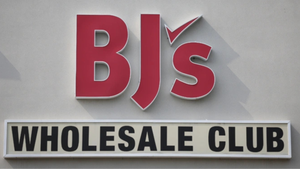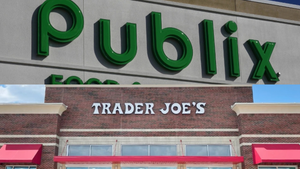Latest weight-loss drugs not slimming down shopper grocery basketLatest weight-loss drugs not slimming down shopper grocery basket
Circana research shows consumers on GLP-1 medications are changing—but not reducing—their food and beverage purchases.

Households with individuals taking glucagon-like peptide-1 (GLP-1) drugs for weight loss aren’t shrinking their grocery purchases any more than households without anyone on these medications, according to Circana.
Recent findings from Circana reveal that having a household member on a GLP-1 medicine “does not necessarily translate to smaller shopping baskets or fewer grocery trips,” the Chicago-based consumer market research firm said Monday. GLP-1 households, instead, are changing their food and beverage choices, Circana noted.
“The shifts in eating patterns attributed to people taking GLP-1 medications is not dissimilar to previous market disruptions,” Sally Lyons Wyatt, executive vice president and practice leader at Circana, said in a statement. “As brands and retailers define their optimal assortments for their consumer base, the potential long-term impact should be considered for both product offerings and marketing messages.”
It’s estimated that 7% of the U.S. population will be taking GLP-1 medications by 2035, Circana reported. Currently, two GLP-1 receptor agonists are Food and Drug Administration-approved specifically for weight management: Saxenda (liraglutide) and Wegovy (semaglutide). Two other semaglutide medicines, Ozempic and Rybelsus, are FDA-approved to treat type 2 diabetes but have also proved effective in reducing weight. Another type 2 diabetes drug, Mounjaro, is expected to gain weight-management treatment approval from the FDA by the year’s end.
GLP-1 drugs help people lose weight by making them feel fuller with smaller amounts of food (through slower emptying of the stomach) and by telling the brain the stomach contains food to reduce appetite and cravings.
These drugs have caused a stir among consumers because of their efficacy in reducing weight versus standard weight-loss solutions. For example, according to a report by UT Southwestern Medical Center in Dallas, participants in clinical trials of Wegovy lost an average of 15% of their body weight, and over half of participants lost even more weight—or up to five times the average weight loss achieved via typical diet and exercise plans.
Impact on consumables purchases non-substantial
Unit sales, in general, have declined across the grocery CPG space since the nation entered an inflationary period almost two years ago. However, Circana’s research showed that GLP-1 households are scaling back their grocery basket at rates similar to the average U.S. household, with a marginal unit sales decline of 0.1% higher than the national average over the past year.
Indeed, Circana said, the presence of a household member on a GLP-1 drug doesn’t produce smaller shopping baskets. The number of food and beverage items bought per trip was 26 for GLP-1 households and 25.1 for all households, reflecting a decline of 1.8 and 1.1 units, respectively, compared with a year ago, Circana’s research indicated. Food and beverage trips per buyer were eight per month for GLP-1 households, virtually the same as the average of 7.9 trips for all households.
Circana’s research, from its Complete Consumer “total view” metric, captured food and beverage purchase and consumption behavior among consumers in households with at least one person on a GLP-1 medication. Data sources included omnichannel receipts, point-of-sale scan and loyalty panels, and customized surveys.
“The evolving food and beverage landscape reveals not a challenge, but an opportunity for brands to develop creative solutions,” according to Patty Altman, executive vice president and practice leader for consumer and shopper insights at Circana. “By adapting to changing usage occasions and by monitoring the broader health and wellness landscape, companies can proactively respond to consumer needs.”
Earlier this month, Walmart drew attention to GLP-1 weight-loss drugs when U.S. CEO John Furner told Bloomberg that rising use of Ozempic and similar medications has shown a minimal impact on food purchases at the retailer. “We definitely do see a slight change compared to the total population,” Furner told Bloomberg in an interview. “We do see a slight pullback in overall basket. Just less units, slightly less calories.”
Circana noted, though, that the disruption of food and beverage sales by GLP-1 drugs isn’t showing an even impact across grocery departments. The researcher said GLP-1 households have exhibited a predilection for high-protein, energy-boosting, hydration and convenient snack products.
“To navigate this journey successfully,” Wyatt stated, “food and beverage companies should seize the opportunity to continue innovating with healthier recipes, premium ingredients and packaging that align with consumer needs and preferences while on the medication.”
About the Author
You May Also Like






